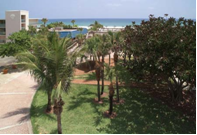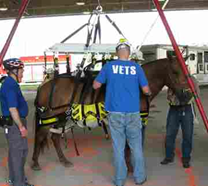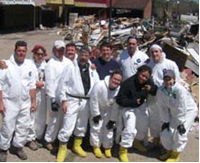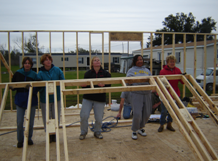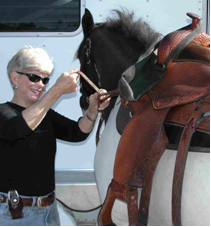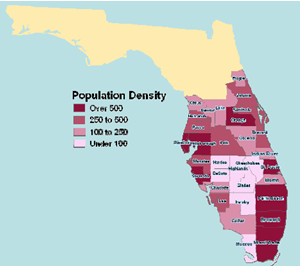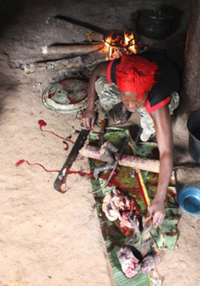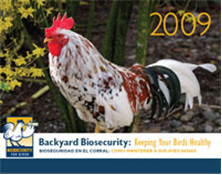
Vol. 4, No. 12, December 2008 |
 Printer-Friendly PDF Version Printer-Friendly PDF Version |
Contents |
2009 SART Conference
| ||||||||
2009 SART Conference: Tentative Agenda-At-A-Glance Wednesday Morning Registration (and possible AR-151 Course "Understanding the Dangers of Agroterrorism??WIFSS) Wednesday Afternoon
8:00 Agriculture economic impact 9:00 Livestock industries concerns
A Florida "green hotel?with a one-palm designation, the Holiday Inn Oceanfront Resort ?Cocoa Beach, offers a conference rate of $99 single/double. The hotel is located at 1300 N Atlantic Avenue in Cocoa Beach. By special arrangement, this rate is available three days prior to and following the conference for those who wish to extend or perhaps begin a family vacation. To make hotel reservations, call 800-206-2747 or (321) 783-2271. Ask for "Florida SART Conference?to get the conference rate. The cut-off date for reservations is February 24, 2009. |
Advisory Board Minutes Posted
|
Minutes of the December 3rd SART Advisory Board meeting held at the new USDA offices in Gainesville are now posted in the member area of the Florida SART web site at www.flsart.org/SART/login.
Accompanying the Minutes is a PowerPoint presentation prepared by Liz Serca, Executive Director of the Texas State Animal Resource Team (TXSART). Liz' presentation describes the structure of the Texas state response community (which is quite different from Florida's) and discusses the 2008 Hurricane Season during which Texas coped with Dolly, Edouard, Gustav and Ike. (Liz has deleted the pictures so that this interesting and informative presentation loads rapidly.) Liz Serca can be reached at the Texas State Animal Resource Team (TXSART), 8104 Exchange Dr., Austin, TX 78754 (512) 452-4224 eserca@tvma.org. The web site is www.txsart.org. |
Animals and Airplanes
|
Animals and airplanes do not mix unless the animals are safely and comfortably caged inside. So what are the chances that a bird will hit your airplane and cause damage that is serious enough to force an emergency landing? Las Vegas odds-makers probably would not bet on this one, but here are a few facts from a recent USDA-APHIS newsletter: 1. Wildlife strikes cost the airline industry approximately $625 million per yearand result in nearly 600,000 hours of aircraft downtime. 2. From January through June 2008, more than 3,000 bird strikes were reported in the U.S. and Canada. 3. Approximately 82,000 wildlife-aircraft strikes have been documented since 1990.
(And lest you think it is only birds that give airplanes fits, your Sentinel Editor personally knows of a flight out of Gainesville that struck a whitetail deer on take-off! The airplane continued to its destination.) |
Editor's Note: Climate Changes
|
In the October 2008 issue of the SART Sentinel, we quoted Florida Fish and Wildlife Conservation Commission Partnership Coordinator Doug Parsons in the brief "Climate Change and Wildlife Planning.?In so doing, we failed to fully attribute his article "Adapting to Climate Change in Florida,?which appeared in the Fall, 2008 issue of Wildlife Professional (pages 59-61). The quote we used was this:
|
Managing Spontaneous Volunteers
in Times of Disaster
The Synergy of Structure and Good Intentions
in Times of Disaster
The Synergy of Structure and Good Intentions
A tornado whips up out of nowhere or a new virus spreads swiftly through the local pet community?
Want more information and ideas? The full-court-press treatment is available through the web site of the National Voluntary Organizations Active in Disaster web site at www.nvoad.org. This and other documents from the NVOAD group lay a broad and comprehensive framework for planning for such topics as the rush of Good Samaritans following a disaster, items as simple as collecting their contact information to the possibility of an insurance claim by an unaffiliated volunteer. Remember that effective mitigation of a disaster begins long before it looms and this document is excellent for that purpose.
|
Horses, Hamsters & Hard Times
Across the US (Time Magazine ?May 28) Pat Dawson's story says horse abandonment has become epidemic in the recent flood of property foreclosures and disastrous economic circumstances wherein food and fuel have cycled higher in price. Among others, he quotes Brent Glover of Idaho's Orphan Acres saying that the phone rings constantly; and Julie DeMuesy of Colorado's Dreamcatchers Equine Sanctuary saying that everyone was "stressed to the max.?br> Marion County (Local6.com ?May 30) Nearly 120 emaciated horses, donkeys and ponies were found on a Ft. McCoy ranch. Inspected by animal services officers, the animals had apparently suffered months of neglect at the hands of animal rescuers who may simply have been overwhelmed by the number of animals, the volume of food and the extent of care required.
|
GVFI ?Monitoring the Peril of Pandemic
APHIS Bird Calendar (Editor says, "I've got mine!?
About the SART Sentinel
|
||||||||||||

